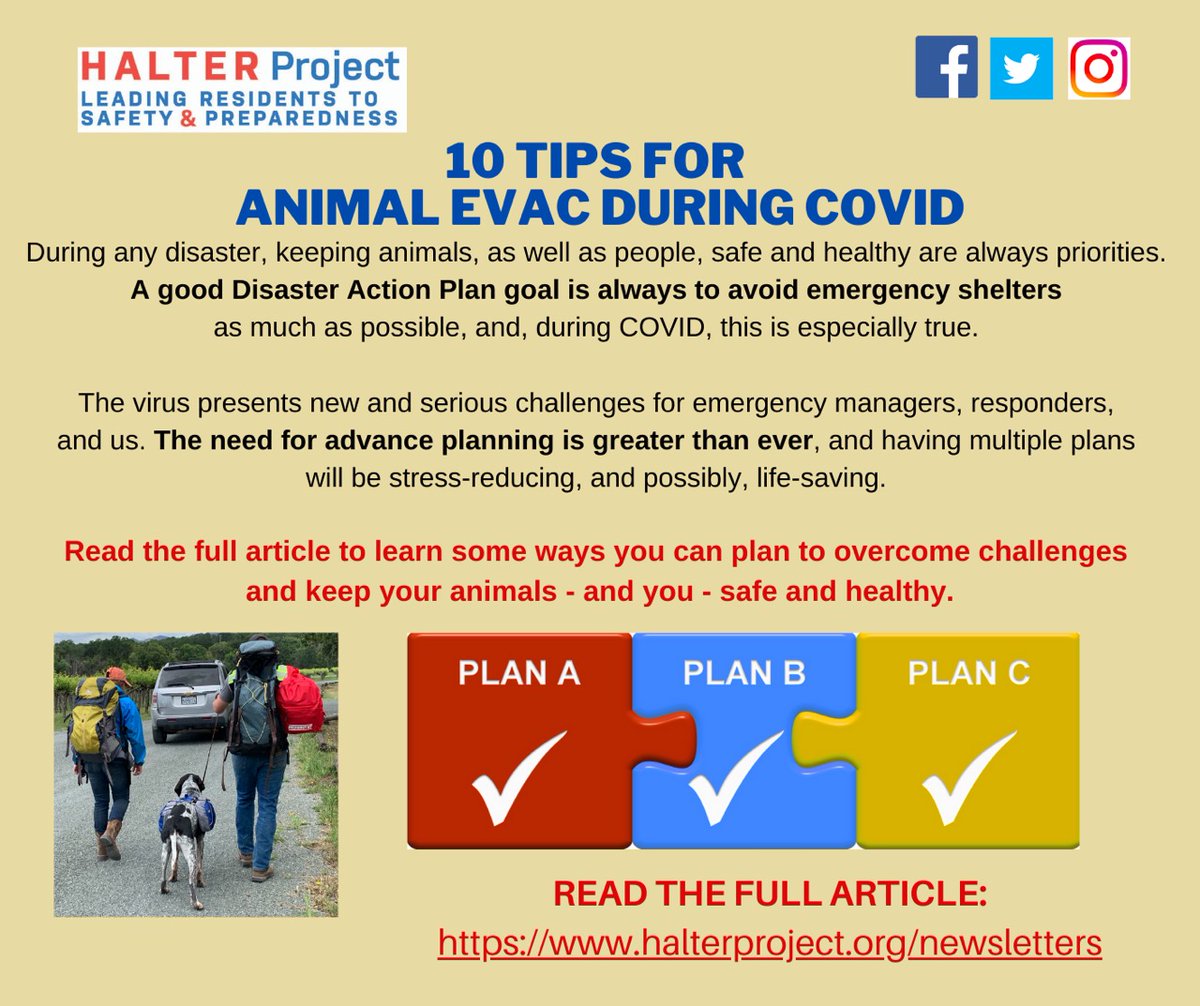halterproject.org/blog/10-tips-f…

Keep your weather radios charged and your car radio tuned to local news.
Make sure you're signed up for all your local emergency alerts, including alerts for your Evacuation destination.
#LakeFire
Emergency Managers will be providing Evacuation Maps with "Temporary Evacuation Points" (TEPs)
#LakeFire
You and your neighbors can plan ahead to meet up at a TEP or "Rally Point", and share resources.
Make a neighborhood Animal Safety Shed stocked with supplies - a super resource.
#LakeFire
Line up several destinations where you & your animals can ride out the emergency.
Arrange emergency transportation resources if you might need them.
#LakeFire
Keep all your emergency information & contacts in several places, including notebooks in your car, purse, and Go-Bags.
#LakeFire
Update ALL your GO-Bags - for people and animals - to include hygiene and sanitizing items.
For people: You need extra masks, sanitizer, wipes, liquid soap, disinfectant cleaner, paper towels, toilet paper, and water.
#LakeFire
For Pets: grooming supplies, pet-safe cleaner for carriers,( NEVER use household disinfectants or bleach on or near pets!), lots of poop bags, pee pads, and water.
#LakeFire
You may be staying in a motel, campground or apartment complex where your pets will need crates, kennel cages, litter & litter box, pee pads.
#LakeFire
While Animal Care resources will work hard to have mobile units providing temporary boarding and supplies to emergency shelter locations, they may take longer to get there. Pack at least enough for the first 48-72 hours.
#LakeFire
Take enough pet food for 3-5 days, pet medications, harnesses, leashes, toys, bedding, cooling pads.
#LakeFire
When possible, arrange for friends or relatives in a safe location to store supplies they can bring to you if you're in a motel or VRBO. This saves car space!
#LakeFire
You may have to go through a drive-up COVID screen before entering a shelter or evacuation center. Your pets could get out of their temporary home, and will be in unfamiliar territory.
#LakeFire
Make sure your pets are secured in the car. Anxious pets may jump through an open window.
While evacuated, keep pets in the most secure place possible. Put a "Pet Inside" sign on the door.
#LakeFire
Get pets microchipped now. Make sure their chip into is current.
Have ID on everyone.
#LakeFire
Ask your veterinarian about calming meds to have on hand for your pets.
#LakeFire
To minimize COVID risks, Staff at Emergency Shelters may be limited. Help our Animal Response resources!
#LakeFire
Follow instructions and arrive prepared to care for your animals while following safe distancing and hygiene procedures, including wearing face coverings.
#LakeFire
Try to have everything you need for at least the first 48-72 hours, such as: Feed, your own hose and buckets, grooming supplies, muck-out equipment, medications, first-aid kit, ID and stall cards.
#LakeFire
Don't wait! If you need help, call your local Animal Care and Control agency, or, the "Emergency Hotline" or "Warmline" number posted by Sheriff, Fire Agency, or local Office of Emergency Services, (OES).
#LakeFire
Resources can respond faster and more safely BEFORE Evacuation Orders are issued, but if your animals are sheltered in place inside an Evac area, request a "Welfare Check" from authorized agency responders.
#LakeFire
Don't post a call for help on Facebook- that puts responders and animals at risk.
There's no way to sugar-coat this: these are challenging times. We are our own best resources. We can do this - working together.
#LakeFire
#LakeFire


